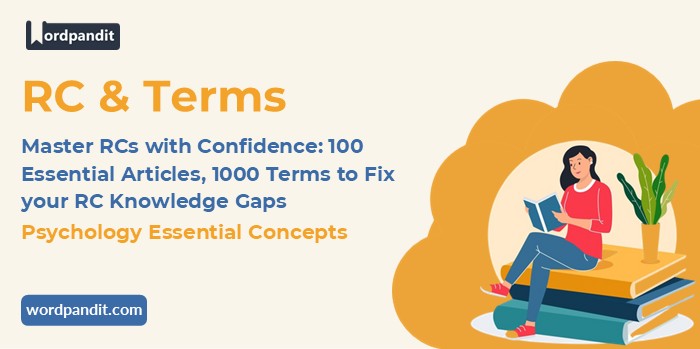Psychology: Essential Concepts for Reading Comprehension
Introduction
Psychology delves into the study of human behavior, thought processes, and emotions, making it an essential field for analyzing and interpreting reading comprehension (RC) passages. Its concepts help us understand individual motivations, social influences, and decision-making—common themes in RC passages. A firm grasp of psychological ideas enhances your ability to dissect arguments, identify assumptions, and evaluate conclusions effectively.
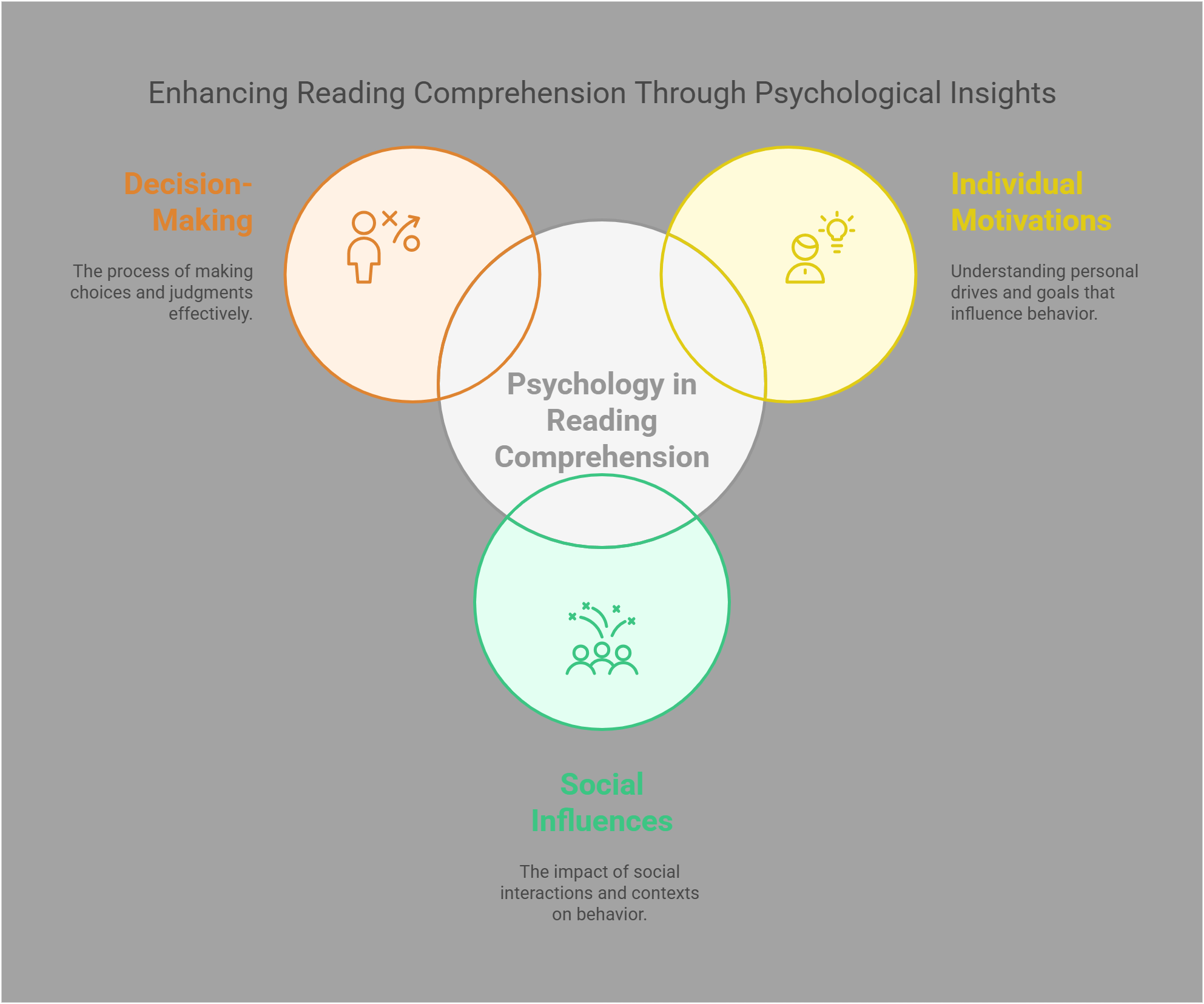
Overview
In this guide, we’ll explore these key psychology-related concepts:
- Cognitive Dissonance
- Social Learning Theory
- Emotional Intelligence
- Maslow’s Hierarchy of Needs
- Group Dynamics
- Behavioral Therapy
- Psychoanalysis
- Neuroplasticity
- Heuristics
- Motivation Theories

Detailed Explanations
1. Cognitive Dissonance
Cognitive dissonance occurs when a person holds conflicting beliefs or experiences a clash between their actions and values, leading to discomfort. This discomfort often motivates them to resolve the inconsistency by changing their beliefs or rationalizing their actions. For instance, someone who values healthy eating but indulges in junk food might justify it by saying they “deserve a cheat day.”
- Conflict between beliefs and actions causes discomfort.
- Individuals strive to reduce this discomfort through rationalization or behavior change.
- Common in decision-making scenarios.
- Highlights human resistance to inconsistencies.
- Often used in marketing to influence consumer behavior.
How Would You Explain This to a 10-Year-Old?
Imagine your friend says they hate scary movies but then watches one. They might feel weird inside because it doesn’t match what they said earlier. To feel better, they might say, “I just watched it because my other friends wanted to!”
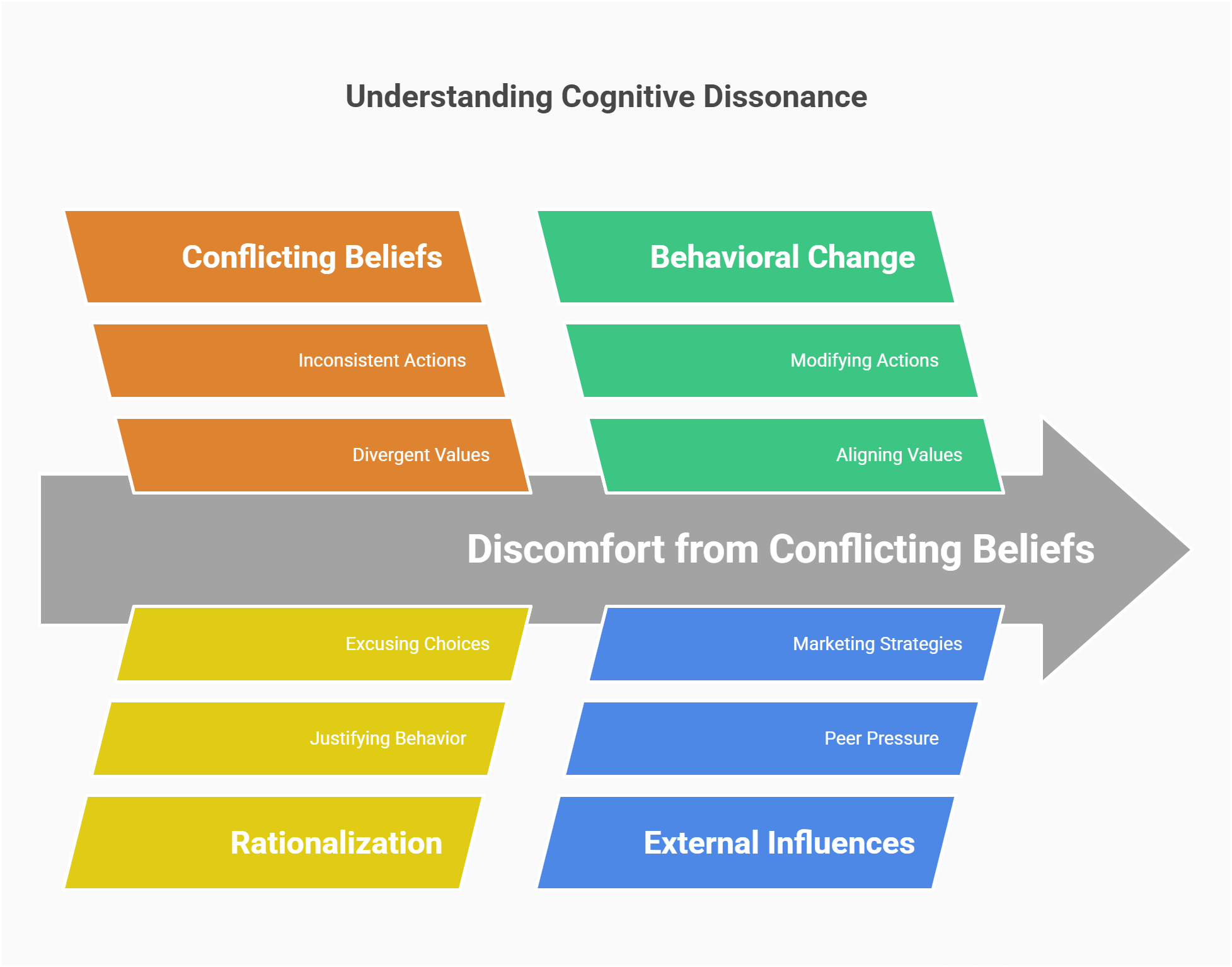
2. Social Learning Theory
Social Learning Theory, proposed by Albert Bandura, explains how people learn by observing others. It emphasizes imitation, modeling, and the influence of rewards or punishments on behavior. For example, children might mimic a teacher’s behavior in class or learn social norms from peers.
- Learning happens by watching others.
- Behavior is influenced by rewards and punishments.
- Includes concepts like modeling and observational learning.
- Explains societal influences on behavior.
- Relevant in discussions about education or cultural development.
How Would You Explain This to a 10-Year-Old?
Imagine you see your older sibling helping mom with chores and getting praised. You might start helping too because you see it’s a good thing to do—and you might get praised too!
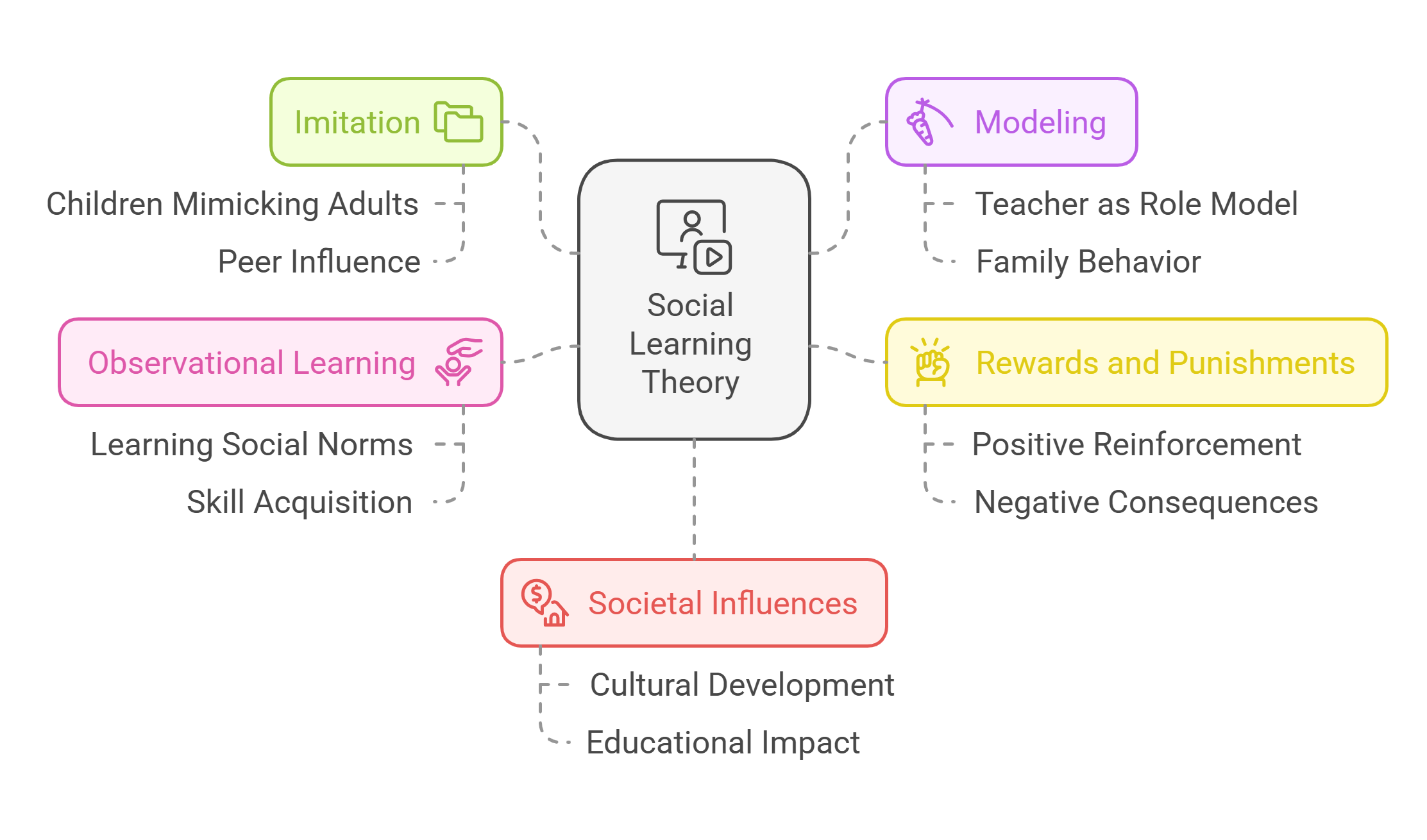
3. Emotional Intelligence
Emotional Intelligence (EI) refers to the ability to understand, manage, and influence emotions—both your own and others’. People with high EI excel in social interactions, empathy, and emotional regulation. EI plays a vital role in leadership, teamwork, and decision-making, making it a common theme in RC passages about interpersonal dynamics or organizational behavior.
- Involves recognizing and managing emotions effectively.
- Key components include self-awareness, empathy, and social skills.
- Critical for leadership and conflict resolution.
- Plays a role in building strong relationships.
- Linked to professional and personal success.
How Would You Explain This to a 10-Year-Old?
Imagine you’re playing soccer and your friend misses an easy goal. Instead of getting mad, you notice they feel bad and say, “It’s okay; we’ll score next time!” That’s using emotional intelligence—understanding how they feel and helping them feel better.
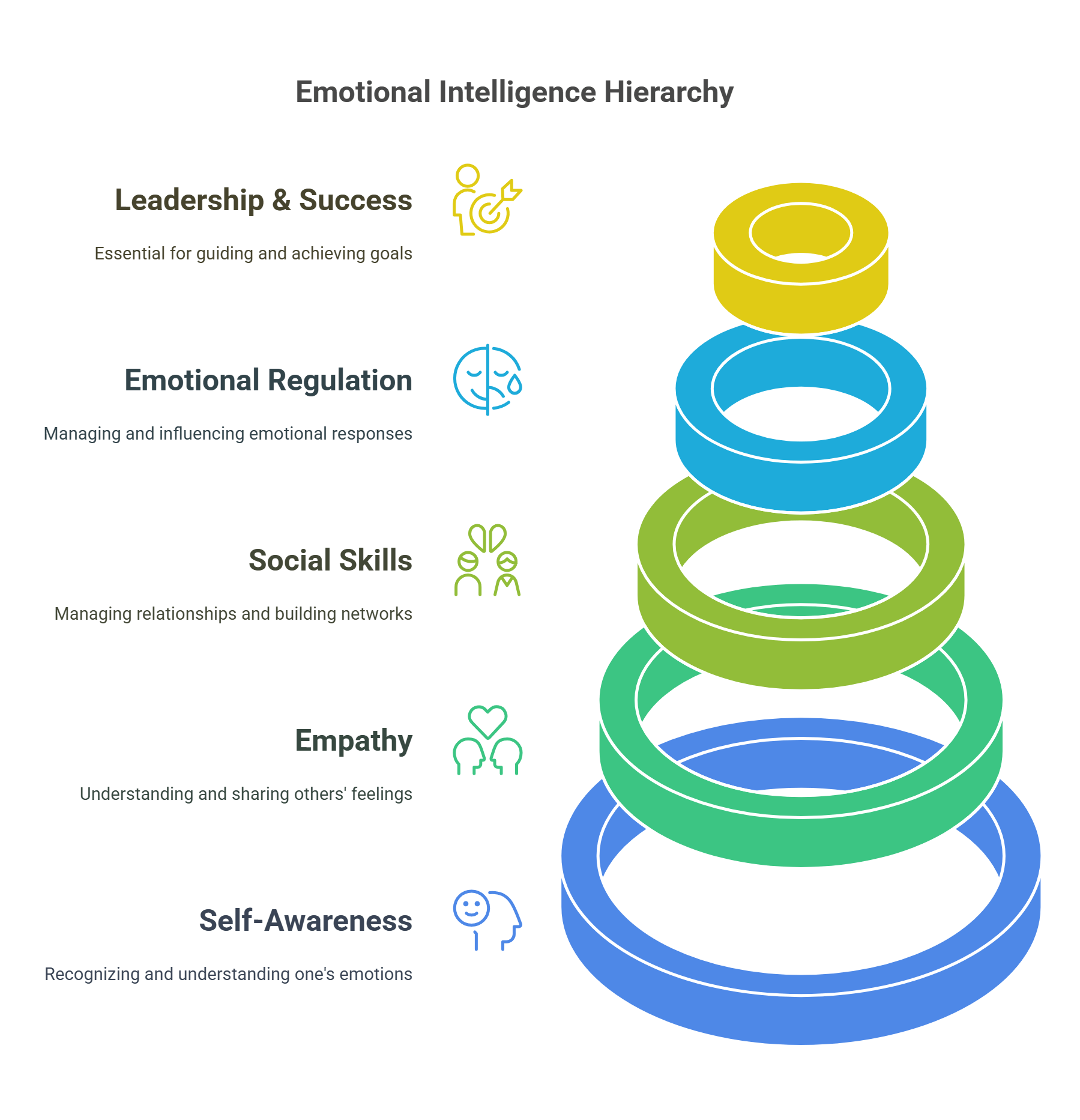
4. Maslow’s Hierarchy of Needs
Abraham Maslow proposed a hierarchy of needs, showing how human motivation is based on fulfilling five levels of needs. Starting with basic needs like food and safety, it progresses to psychological needs like belonging and self-esteem, and ultimately self-actualization—achieving one’s potential.
- Pyramid structure: basic needs at the bottom, self-actualization at the top.
- Needs must generally be met in order, starting with physiological and safety needs.
- Explains human motivation and behavior.
- Widely applied in psychology, education, and workplace settings.
- Aids in understanding personal and societal priorities.
How Would You Explain This to a 10-Year-Old?
Think of it like climbing a ladder. First, you need food and a safe place to sleep (bottom rungs). Once you have those, you want friends to play with and feel good about yourself. At the top, you try to be your best self, like learning new skills or helping others.
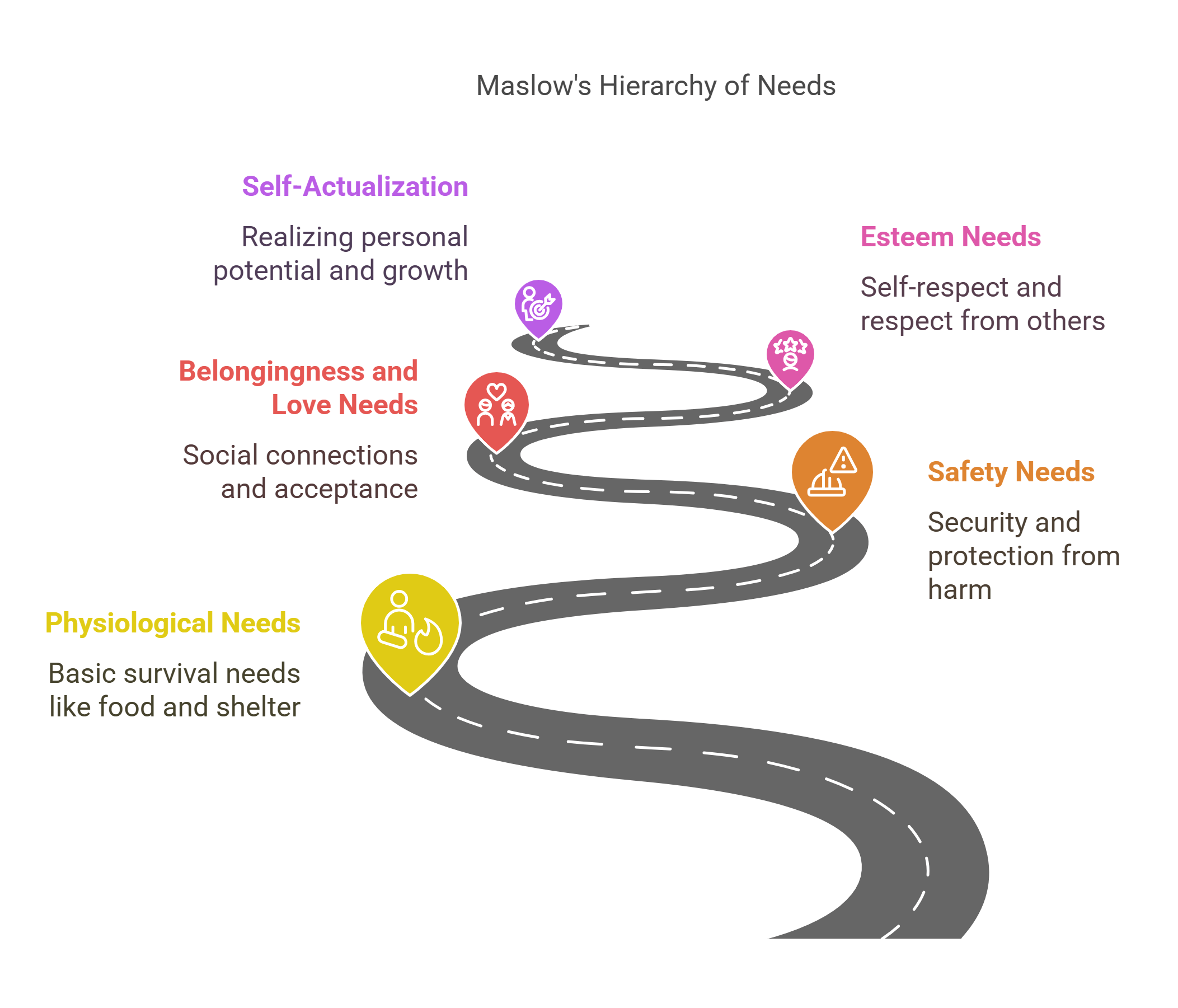
5. Group Dynamics
Group dynamics explores how people behave and interact in groups. It studies roles, communication, leadership, and conflict resolution.
- Examines how individuals function in group settings.
- Covers roles, norms, and group decision-making.
- Highlights the effects of leadership and peer pressure.
- Useful in understanding organizational and societal interactions.
- Relevant in psychology, sociology, and management.
How Would You Explain This to a 10-Year-Old?
Think of a group project at school. Some kids take charge, some follow, and sometimes people disagree. How the group works together and solves problems shows group dynamics.
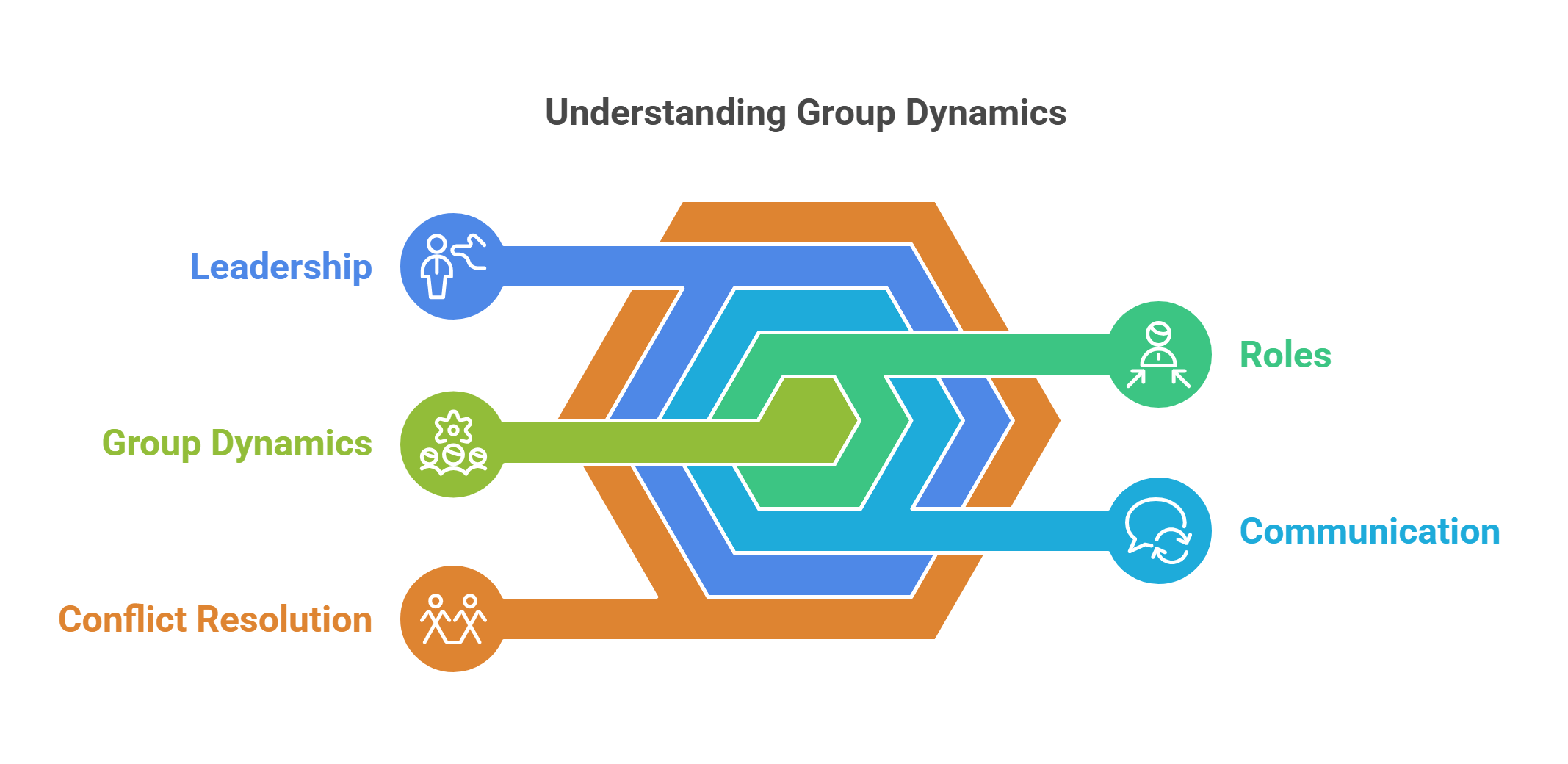
6. Behavioral Therapy
Behavioral therapy focuses on changing unhealthy behaviors through techniques like reinforcement, conditioning, and exposure.
- Focuses on changing negative behaviors.
- Uses techniques like reinforcement and conditioning.
- Commonly applied to mental health treatments.
- Emphasizes practical, measurable changes.
- Found in psychology and healthcare discussions.
How Would You Explain This to a 10-Year-Old?
Imagine you’re scared of dogs, so your parent helps you by showing you friendly puppies and teaching you to pet them safely. Little by little, you feel braver. That’s how behavioral therapy works!

7. Psychoanalysis
Psychoanalysis, developed by Sigmund Freud, investigates unconscious thoughts, memories, and desires influencing behavior.
- Focuses on the unconscious mind.
- Explores childhood experiences and repressed feelings.
- Introduced concepts like the id, ego, and superego.
- Basis for many modern psychological theories.
- Relevant in RC passages about therapy or human nature.
How Would You Explain This to a 10-Year-Old?
Think of your mind like an iceberg. The part you see is your thoughts, but most of it is underwater—your feelings and memories you don’t always think about but still affect you.
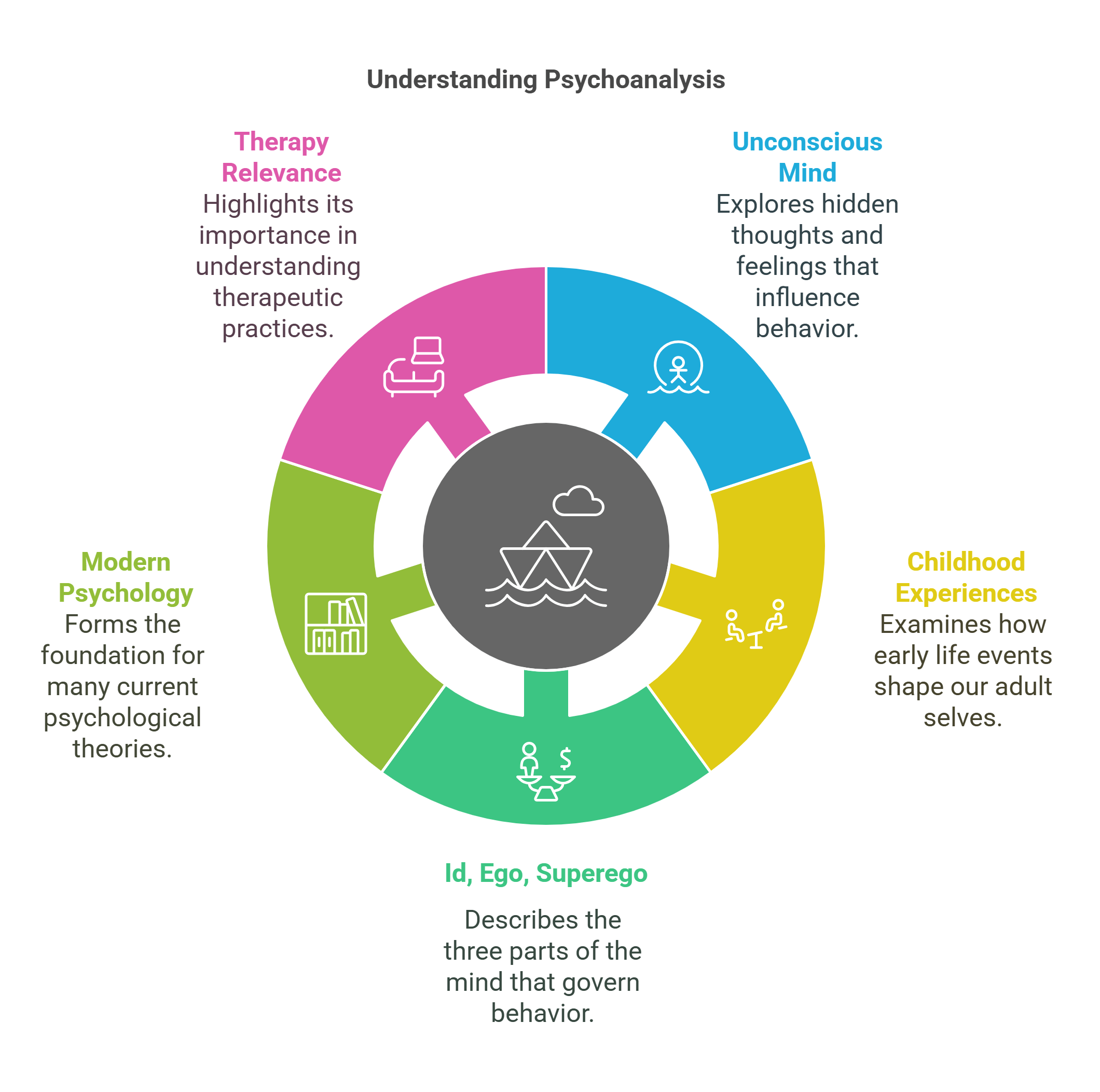
8. Neuroplasticity
Neuroplasticity is the brain’s ability to change and adapt throughout life. It helps people recover from injuries, learn new skills, and adapt to challenges.
- Describes the brain’s ability to rewire itself.
- Essential for learning and recovery.
- Demonstrates the brain’s adaptability.
- Linked to education and rehabilitation science.
- Often discussed in modern neuroscience.
How Would You Explain This to a 10-Year-Old?
Imagine your brain as a road map. If one road is blocked, your brain can build a new path to get where it needs to go.
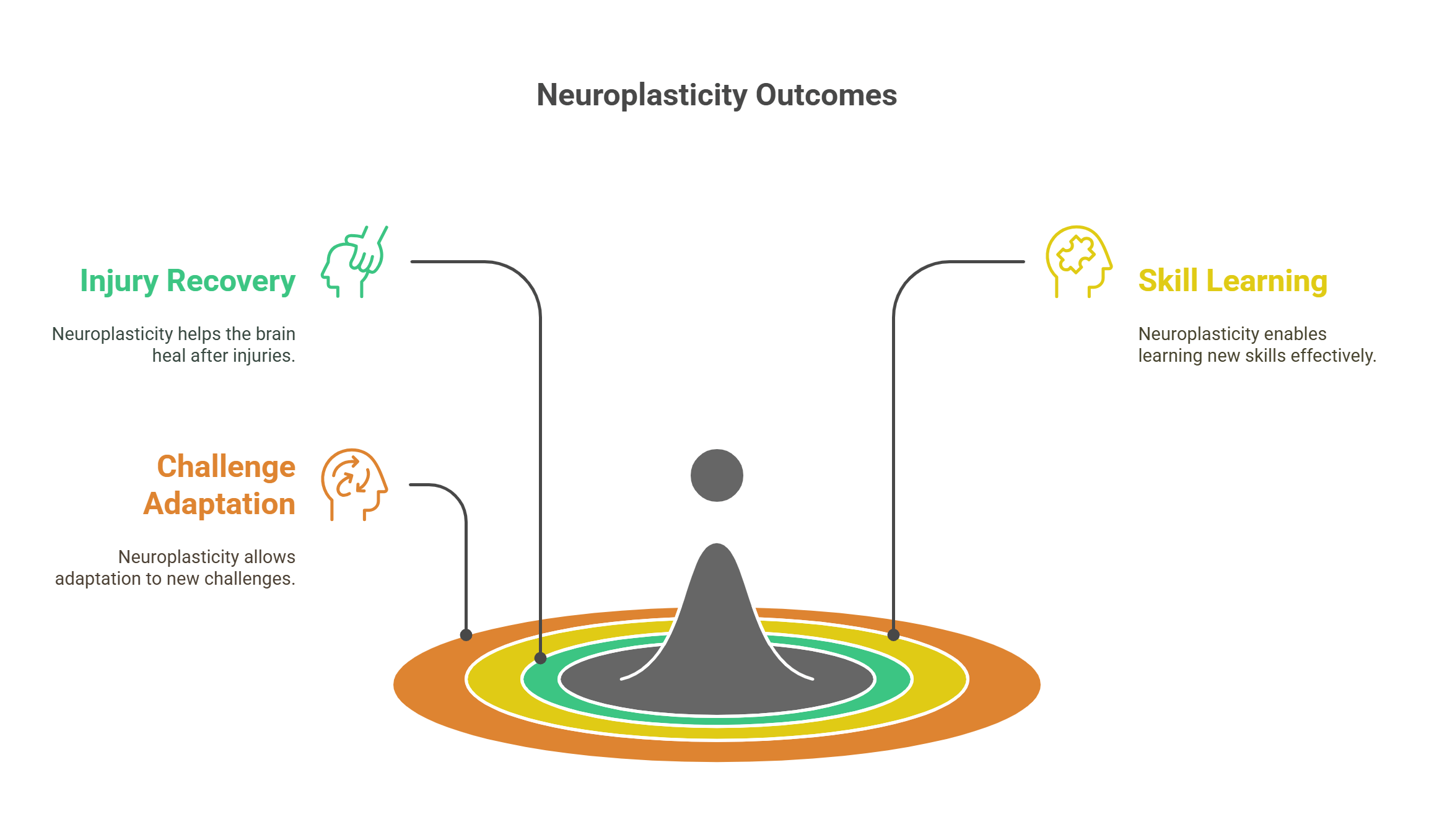
9. Heuristics
Heuristics are mental shortcuts people use to make decisions quickly. While useful, they can lead to errors in judgment.
- Mental shortcuts for quick decision-making.
- Often based on experience or intuition.
- Can lead to biases or mistakes.
- Key in psychology and behavioral economics.
- Helps explain human decision-making processes.
How Would You Explain This to a 10-Year-Old?
If you see a red fruit, you might think it’s an apple because that’s what you know. But sometimes it could be a cherry or tomato. That’s your brain making a quick guess!

10. Motivation Theories
Motivation theories explore what drives people to act. They range from intrinsic (internal desires) to extrinsic (external rewards).
- Differentiates between intrinsic and extrinsic motivation.
- Includes theories like expectancy theory and self-determination theory.
- Explains why people pursue goals.
- Relevant in education, psychology, and management.
- Highlights the role of incentives and personal fulfillment.
How Would You Explain This to a 10-Year-Old?
Think about doing homework. Sometimes you do it because you want a gold star (extrinsic), and sometimes you do it because you like learning (intrinsic).
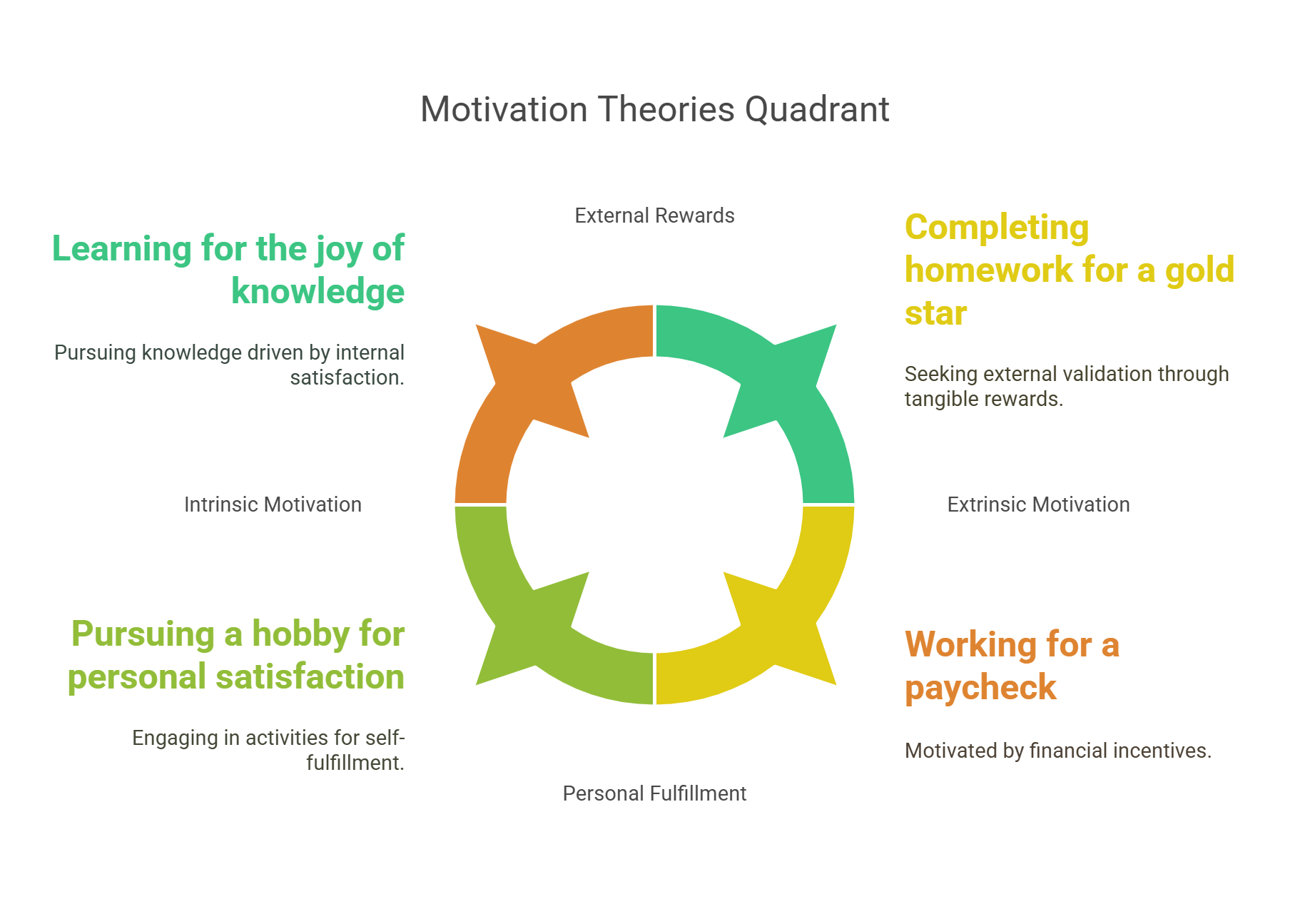
Conclusion
Psychology provides a rich foundation for analyzing RC passages, offering insights into human behavior, decision-making, and societal issues. By understanding these concepts, you’ll sharpen your ability to engage with complex texts, identify underlying arguments, and answer questions confidently. With practice, psychology becomes a key tool in your RC arsenal, helping you excel in exams and beyond.

